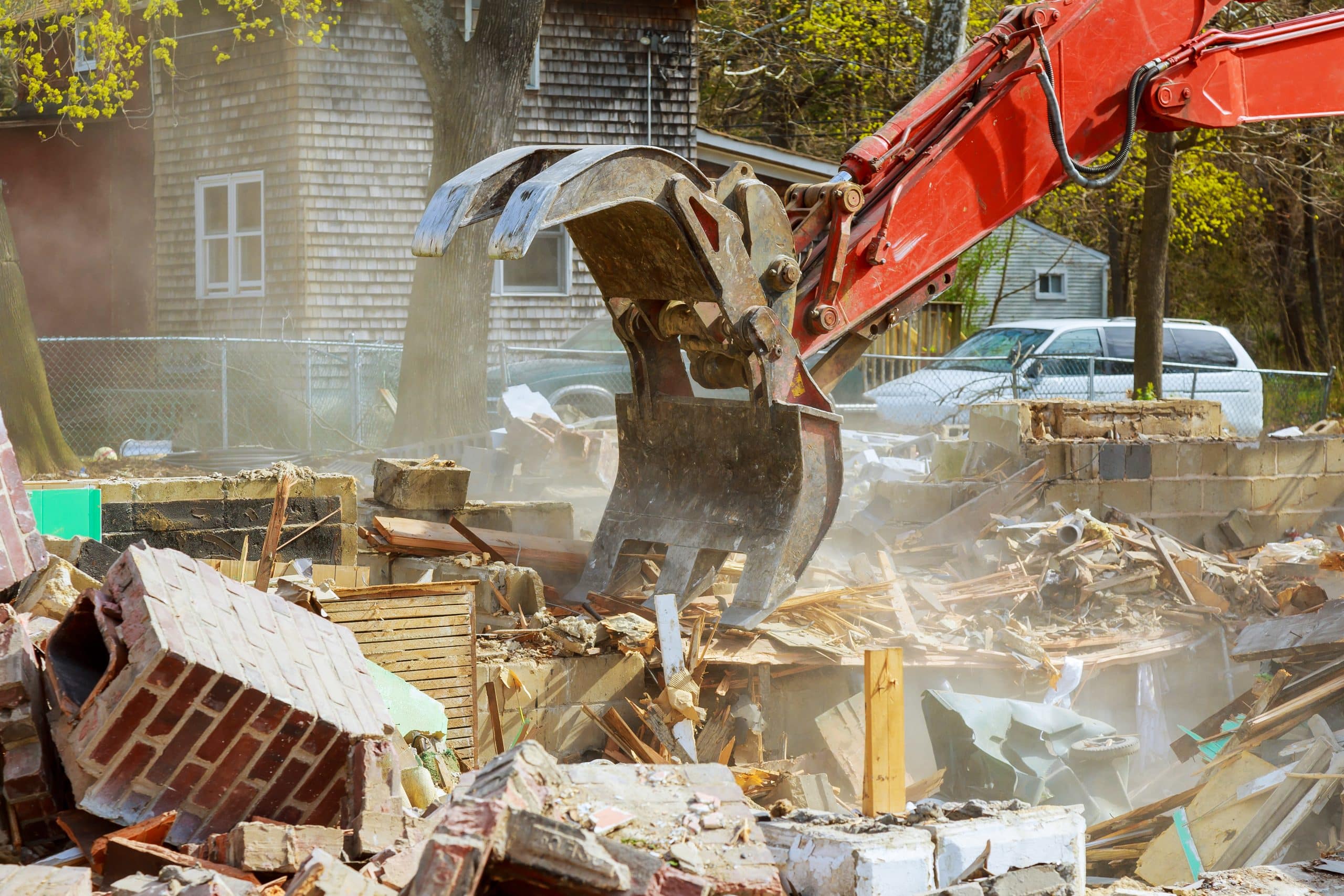Post-Flood Demolition & Rebuilding In NSW
Post-Flood Rebuilding in NSW: Why Professional Demolition Comes First
Protecting Communities Through Safe Site Preparation

Rapid Demo’s licensed teams prepare flood-affected sites for safe rebuilding. Image source: Rapid Demo Gallery.
The Critical Role of Demolition in Flood Recovery
The 2022-2025 NSW floods left thousands of properties with hidden structural damage and asbestos exposure risks. As licensed demolition experts, Rapid Demo has cleared over 180 flood-affected sites across Hawkesbury, Lismore, and Northern Rivers, finding that 68% required full demolition because of compromised foundations and or hazardous materials.
This guide explains why professional demolition and asbestos removal after floods form the non-negotiable first step in safe rebuilding – and how cutting corners risks insurance rejections or long-term health impacts.
3 Reasons Demolition Can’t Be Skipped
1. Structural Integrity Concerns
Floodwaters erode soil under concrete slabs and rot timber frames, creating invisible collapse risks. In Windsor, 2023 post-flood inspections revealed:
- 42% of homes had foundation cracks >10mm
- 28% showed roof truss warping
Our solution: 3D ground scanners map subsurface damage, while remote-controlled excavators safely dismantle unstable structures.
2. Asbestos Exposure in Older Homes
Approximately 32% of pre-1990 properties in NSW contain asbestos materials. Floods fracture these into asbestos fibres – microscopic particles linked to lung cancer and other illnesses.
Case study: A Hawkesbury homeowner attempted DIY cleanup of flood-damaged asbestos fencing, releasing asbestos fibres across their property. This illegal disposal resulted in $18,000 fines and required licensed asbestos removalists to remediate.
Our process:
- Containment: Airlock zones prevent asbestos fibre spread
- Removal: Licensed asbestos removalists handle Class H disposal
- Disposal: EPA-tracked to approved facilities
Explore our asbestos removal services
3. Insurance Compliance Requirements
NSW insurers rejected 41% of 2023 flood claims because of some of the following:
- Unlicensed demolition work
- Missing SafeWork permits
- Inadequate contamination reports
We provide:
✅ Engineer-certified demolition reports
✅ Asbestos air monitoring certificates
✅ EPA waste disposal dockets
The Rebuilding Process: Where Demolition Fits In

Case Study: Lismore Heritage Home Restoration
Challenge:
A 1920s fibro cottage with asbestos cladding flooded twice in 12 months.
Our approach:
- Emergency asbestos containment (48 hours)
- Full demolition preserving original brick footings
- Soil pH balancing for new flood-resistant foundation
Outcome:
- Heritage Council approval for rebuild
- 30% insurance premium reduction
- Completed 14 weeks faster than owner-managed projects
NSW Rebuilding Support Resources
- Flood-Resilient Designs: Updated NSW Reconstruction Guidelines
- Soil Testing: Subsidised lab testing for 2022-2025 flood sites
- Rebuilding your property after a flood (NSW government)
FAQs: Post-Flood Demolition & Rebuilding
Q: Can I salvage my garage if the house is demolished?
A: Only if slab laser tests show <3mm settlement – we offer free assessments.
Q: How long until rebuild starts post-demolition?
A: Most clients begin construction 4-6 weeks after site clearance.
Q: Does demolition affect land value?
A: No – compliant sites with EPA certificates often attract better bids.
Start Your Compliant Rebuild
✅ Free demolition assessments (24/7 availability)
✅ Insurance documentation support
✅ NSW-approved asbestos removal
Call 0475 090 822
Or request emergency service

